南湖新闻网讯(通讯员 石仕一)近日,新2网址
宋彤星副研究员联合果蔬园艺作物种质创新与利用全国重点实验室、药用植物资源可持续利用团队梅之南教授、苏州大学贾志浩副教授以“Polygonati Rhizoma prevents glucocorticoid-induced growth inhibition of muscle via promoting muscle angiogenesis through deoxycholic acid”为题在Journal of Cachexia, Sarcopenia and Muscle (老年病学与肌少症领域排名第一)期刊上发表最新研究成果。研究发现湖北“十大楚药”之一的黄精,其水提物及活性成分模拟物可以有效增强肌肉血管生成,缓解肌肉生长受限,从而促进动物生长。

生猪在我国农业生产中占据十分重要地位。仔猪在饲养过程中,易发出生后生长迟缓,降低群体生长效率。目前对于猪生长迟缓的形成原因及具体机制还不明确,从而缺乏针对性营养调控策略。课题组前期研究发现了仔猪生长迟缓过程中,表现为糖脂代谢紊乱,并揭示了脂肪细胞能量代谢是促进仔猪生长的切入点(Life metabolism, 2024; Advanced science, 2024)。肌肉作为糖脂代谢和能量利用的重要器官,也是重要的经济性状,而生长迟缓猪中肌肉发育受限的机制并不清楚。本研究发现湖北道地药材黄精,其水提物具有显著促进肌肉发育,提升肌肉功能的作用。进一步研究发现,黄精活性成分模拟物可以通过增加核心肠道菌群的丰度,上调菌群代谢物脱氧胆酸水平,激活TGR5/cAMP/PKA/pCREB信号轴,促进肌肉血管生成,从而改善肌肉生长(JCSM,2025)。
本研究提出肌肉血管生成是促进动物肌肉发育和增强肌肉功能的重要靶点,并揭示中药材黄精水提物及其活性物质模拟物可以作为重要调控手段,为营养策略缓解猪生长迟缓提供理论依据,也将为改善人类肌萎缩以及糖脂代谢紊乱相关疾病提供新思路。

作用机制图(JCSM 期刊供图)
新2网址
新2网址
博士生石仕一、中国科新2网址
亚热带农业生态研究所助理研究员李瑞为本文共同第一作者,宋彤星副研究员、梅之南教授和贾志浩副教授为该论文的共同通讯作者。华中农业大学左波教授、许庆彪副研究员等为本研究提供了指导和帮助。该研究得到了国家自然科学基金项目、国家重点研发计划项目以及华中农大中央高校基本科研业务费专项资金等项目资助。
原文链接:JCSM,2025://onlinelibrary.wiley.com/doi/10.1002/jcsm.13853
Advanced science,2024://onlinelibrary.wiley.com/doi/10.1002/advs.202310236
英文摘要:Obesity represents a low-grade chronic inflammation status, which is associated with compromised adaptive thermogenesis. However, the mechanisms underlying the defective activation of thermogenesis in chronic inflammation remain unclear. Here, a chronic inflammatory model is first estabolished by injecting mice with low-dose lipopolysaccharide (LPS) before cold exposure, and then it is verified that LPS treatment can decrease the core body temperature of mice and alter the microbial distribution in epididymal white adipose tissue (eWAT). An adipose tissue-resident bacterium Sphingomonas paucimobilis is identified as a potential inhibitor on the activation of brown fat and browning of inguinal WAT, resulting in defective adaptive thermogenesis. Mechanically, LPS and S. paucimobilis inhibit the production and release of 15-HETE by suppressing its main metabolic enzyme 12 lipoxygenase (12-LOX) and 15- Hydroxyeicosatetraenoic acid (15-HETE) rescues the impaired thermogenesis. Interestingly, 15-HETE directly binds to AMP-activated protein kinase α (AMPKα) and elevates the phosphorylation of AMPK, leading to the activation of uncoupling protein 1 (UCP1) and mitochondrial oxidative phosphorylation (OXPHOS) complexes. Further analysis with human obesity subjects reveals that individuals with high body mass index displayed lower 15-HETE levels. Taken together, this work improves the understanding of how chronic inflammation impairs adaptive thermogenesis and provides novel targets for alleviating obesity.
Life metabolism,2024://doi.org/10.1093/lifemeta/load052
英文摘要:Postnatal growth retardation (PGR) frequently occurs during early postnatal development of piglets and induces high mortality. To date, the mechanism of PGR remains poorly understood. Adipose tissue-derived microbes have been documented to be associated with several disorders of metabolism and body growth. However, the connection between microbial disturbance of adipose tissue and pig PGR remains unclear. Here, we investigated piglets with PGR and found that the adipose tissue of PGR piglets was characterized by metabolism impairment, adipose abnormality, and specific enrichment of culturable bacteria from Proteobacteria. Gavage of Sphingomonas paucimobilis, a species of Sphingomonas genus from the alphaproteobacteria, induced PGR in piglets. Moreover, this bacterium could also lead to metabolic disorders and susceptibility to acute stress, resulting in weight loss in mice. Mechanistically, multi-omics analysis indicated the changes in lipid metabolism as a response of adipose tissue to abnormal microbial composition. Further experimental tests proved that one of the altered lipids phosphatidylethanolamines could rescue the metabolism disorder and growth retardation, thereby suppressing the amount of Sphingomonas in the adipose tissue. Together, these results highlight that the microbe–host crosstalk may regulate the metabolic function of adipose tissue in response to PGR.
审核人 宋彤星

